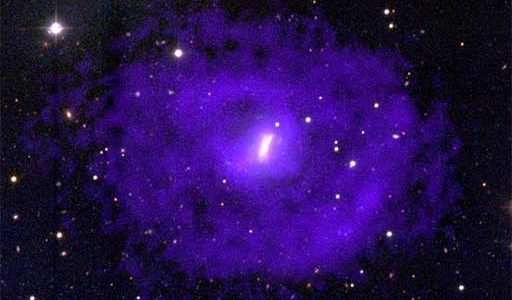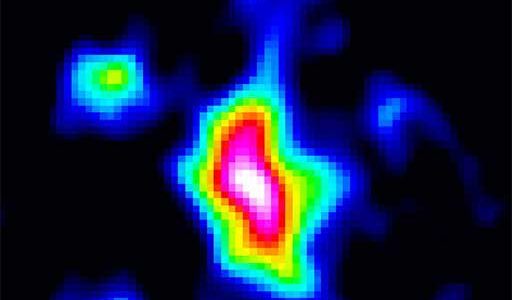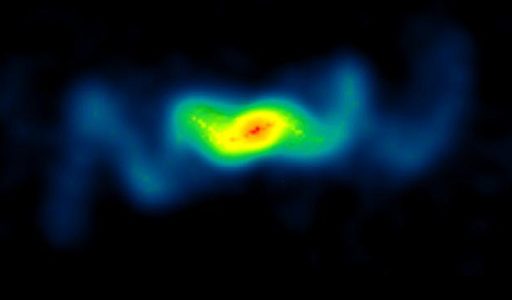Latest NRAO News
News is managed by NRAO News & Public Information. Questions about News? Have a story to share? Want to interview a scientist or create new media about our telescopes?

Forget the headphones you saw in the Warner Brothers thriller Contact, as well as the guttural throbs emanating from loudspeakers at the Very Large Array in that 1997 movie.

Astronomers using the National Science Foundation’s Very Large Array radio telescope are taking advantage of a once-in-a-lifetime opportunity to watch an old star suddenly stir back into new activity after coming to the end of its normal life.

Astronomers at Sweet Briar College and the Naval Research Laboratory have detected a powerful new bursting radio source whose unique properties suggest the discovery of a new class of astronomical objects.

A giant flash of energy from a supermagnetic neutron star thousands of light-years from Earth may shed a whole new light on scientists’ understanding of such mysterious magnetars and of gamma-ray bursts.

The American Astronomical Society has awarded its prestigious George Van Biesbroeck Prize to Dr Eric Greisen of the National Radio Astronomy Observatory in Socorro, New Mexico.

An astronomer studying small irregular galaxies discovered a remarkable feature in one galaxy that may provide key clues to understanding how galaxies form and the relationship between the gas and the stars within galaxies.

Astronomers have discovered three brown dwarfs — enigmatic objects that are neither stars nor planets — emitting radio waves that scientists cannot explain. The three newly-discovered radio-emitting brown dwarfs were found as part of a systematic study of nearby brown dwarfs using the National Science Foundation’s Very Large Array radio telescope.

Astronomers using the National Science Foundation’s Very Large Array radio telescope to study the most distant known quasar have found a tantalizing clue that may answer a longstanding cosmic chicken-and-egg question.

Making an extra effort to image a faint, gigantic corkscrew traced by fast protons and electrons shot out from a mysterious microquasar paid off for a pair of astrophysicists who gained new insights into the beast’s inner workings and also resolved a longstanding dispute over the object’s distance.

Astronomers using the National Science Foundation’s Very Large Array have overcome longstanding technical hurdles to map the sky at little-explored radio frequencies that may provide a tantalizing look deep into the early Universe.





